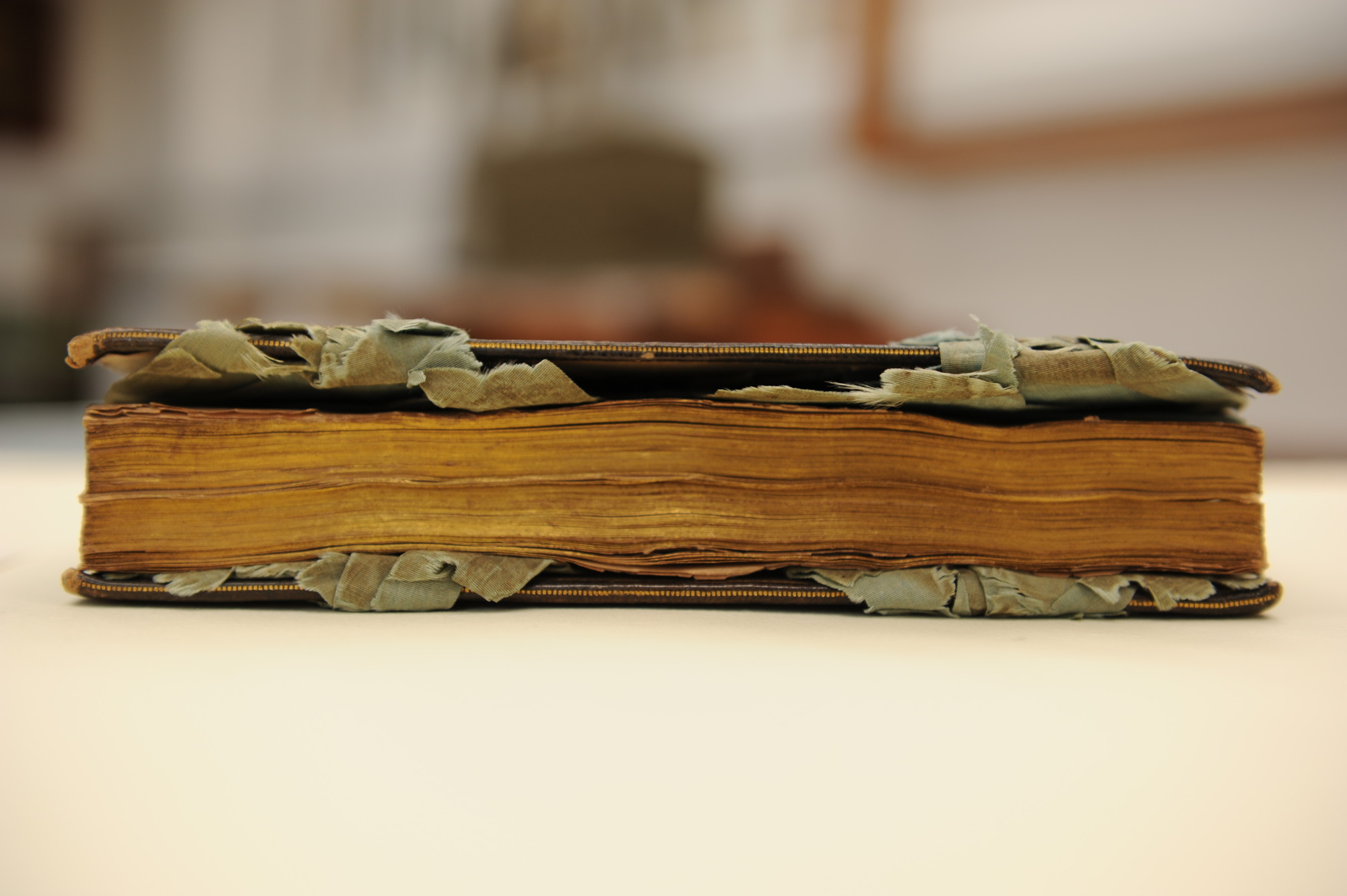
Book conservation: The Eikon Basilike
Study of this book can tell us much about its origins
Assessing the object
Both the ribbons and the book were in a poor state when they were first considered for Royal Collection Trust’s exhibition In Fine Style, which was on display at The Queen’s Gallery, Buckingham Palace in May 2013.
The ribbons had been folded inside the book so that when closed, the fore-edge of the book was thicker than the spine.
This pressure caused the joints to crack, and the middle section of the book’s text-block became loose as the sewing, which holds a book together, was broken. The leather covering of the book had become weak.
The ribbons had also suffered: the silk was splitting along the fold lines and there were losses to the fabric.
Pollution and acid deposits from the fingers of people handling the ribbons over many years were clearly visible.
Damage had also occurred where the ribbons had rubbed along the edges of the boards.
Sunlight had acted on the ribbons, discolouring them and degrading the silk fibres. Only the parts of the ribbons which had been covered by the endpapers inside the book’s boards have kept their original colour.
Following thorough examination and assessment, the Royal Library’s Head Bookbinder concluded that no work could be safely carried out on the book’s binding and structure while the fragile ribbons remained attached.
It was advised that they be removed from the book while it was being repaired, and that a textile conservator be asked to treat them before reattaching them into the covers.
After consideration of the options and of the risks involved the Royal Library’s curators agreed to the suggested course of action.
Not only would conservation work prolong the life of the book for many more years; it would give an opportunity to further investigate the book’s history, and to learn more about whether the lengths of silk could originally have formed one of Charles I’s Garter ribbons.







